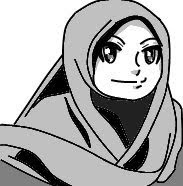A. Basic meanings
B. Position and movement
Most prepositions of place can say where something is or where it is going.
Position:
 There was a barrier across the road.
There was a barrier across the road.
Movement:
 A dog ran across the road in front of us.
A dog ran across the road in front of us.
At usually expresses position, and to expresses movement.
Position:
 Everyone was at the cafe.
Everyone was at the cafe.
Movement:
 Everyone went to the cafe.
Everyone went to the cafe.
As a general rule, in and on express position, and into and onto express movement.
Position:
 We were sitting in the cafe.
We were sitting in the cafe.
 She stood on the balcony
She stood on the balcony.
Movement:
 We went into the cafe.
We went into the cafe.
 She walked onto the balcony.
She walked onto the balcony.
But we can also use in and on for movement, especially in informal English.
 We went in the cafe.
We went in the cafe.
 Someone pushed me in the swimming-pool.
Someone pushed me in the swimming-pool.
 Babies often throw things on the floor.
Babies often throw things on the floor.
After lay, place, and put we usually use in or on rather than into or onto.
 They laid the body on a blanket.
They laid the body on a blanket.
 A number of advertisements were placed in the newspapers.
A number of advertisements were placed in the newspapers.
 I put a clean sheet on the bed.
I put a clean sheet on the bed.
After sit we use in or on.
 Tom sat down in the armchair.
Tom sat down in the armchair.
 We could go and sit on that seat.
We could go and sit on that seat.
NOTE:
Compare these examples.
 We walked on the beach (for half an hour)
We walked on the beach (for half an hour)
 We walked (from the car park) onto the beach.
We walked (from the car park) onto the beach.
C. Other meanings
Prepositions of place can also have more abstract meanings.
 No one is above/beyond criticism. (= too good to be criticized)
No one is above/beyond criticism. (= too good to be criticized)
 Our next game is against Arsenal. (The opposing team is Arsenal)
Our next game is against Arsenal. (The opposing team is Arsenal)
 The band is among the most successful ever. (= one of the most successful)
D. Exercise
The band is among the most successful ever. (= one of the most successful)
D. Exercise
Write a sentence to explain each of the pictures below. Good luck!^^




